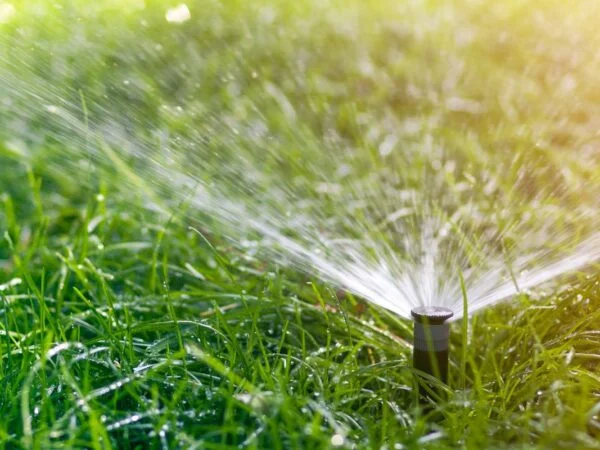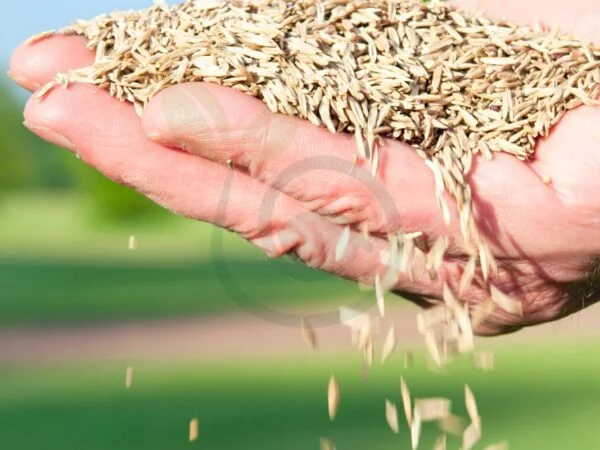Wondering about the best times to water grass seed for a lush and vibrant lawn? Timing is crucial. Understanding the ideal watering schedule can make a significant difference in the success of your lawn establishment efforts. In this guide, we will explore the key factors that determine the best times to water grass seed, helping you achieve a healthy and thriving lawn.
Key Takeaways
- Optimal Watering Times: Water your grass seed in the early morning or late evening to reduce evaporation and ensure maximum absorption.
- Watering Frequency: Water newly seeded areas lightly multiple times a day to keep the soil moist but not waterlogged.
- Correct Watering Amount: Aim to keep the soil consistently moist but not soggy by adjusting the watering amount based on weather conditions.
- Minimizing Evaporation: Use mulch or straw to cover newly seeded areas and reduce water loss through evaporation.
- Soil Preparation: Properly prepare the soil by loosening it, removing debris, and ensuring good seed-to-soil contact for optimal germination.
- Growth Timeframe: Understand that grass seed typically germinates within 5 to 30 days, but full establishment may take several months depending on the grass type and conditions.
- **
Optimal Watering Times
Morning Dew
- Remove morning dew before watering grass seed to prevent over-saturation.
- Use a gentle rake or leaf blower to clear dew for effective watering.
- Ensure the soil is adequately moist as morning dew can hinder water absorption.
Avoiding Night
- Avoid watering grass seed at night to prevent mold growth and fungal diseases.
- Watering at night leads to prolonged moisture on the grass, promoting fungal diseases.
- The optimal watering times are early morning and late afternoon for best results.
Midday Sun
- Water grass seed during midday sun sparingly to avoid evaporation in high temperatures.
- High temperatures during midday can cause rapid water loss from the soil.
- Adjust your watering schedule to mornings and evenings for better absorption.
Watering Frequency
Seed Germination
Consistent moisture levels are crucial for successful grass seed germination. Monitoring soil moisture closely is essential to support effective seed sprouting. Proper watering frequency significantly impacts the seeds' ability to sprout and grow.
Encouraging deep root development in newly germinated seeds requires adjusting watering frequency. Gradually reducing watering sessions post-germination promotes roots to grow deeper into the soil. Deep roots aid grass in withstanding drought conditions and establishing a robust foundation.
Root Development
Adapt your watering schedule according to weather conditions, particularly rainfall patterns. Skipping watering sessions after rain showers prevents over-saturation of the soil, ensuring optimal root growth. Monitoring weather forecasts helps in optimizing your lawn's watering routine for maximum effectiveness.
Correct Watering Amount
Seed Coverage
Ensure even coverage of grass seeds across the entire lawn area. Patchy seed distribution can lead to uneven growth patterns in your lawn. Use proper seeding techniques to achieve uniform coverage for optimal results.
Soil Saturation
Avoid over-saturating the soil as it can suffocate grass seeds. Maintain moist soil without excessive water accumulation for healthy seed growth. Proper drainage is essential to prevent waterlogging and promote seed germination.
Avoiding Runoff
- Prevent runoff by dividing watering sessions into shorter intervals.
- Adjust sprinkler settings to minimize excess water flow that causes runoff.
- Properly soak the soil without creating puddles or runoff for efficient absorption.
Minimizing Evaporation
Best Practices
Implement a consistent watering schedule to meet grass seed requirements. Utilize a timer-controlled sprinkler system for efficient watering. Follow recommended guidelines for frequency and duration to achieve optimal results.
Mulching Benefits
Apply straw mulch before watering new grass seed to prevent evaporation. Mulching retains soil moisture, safeguarding seeds from drying out. Opt for organic materials that enrich the soil as they decompose over time.
Soil Preparation
Before Planting
Prepare the soil with adequate moisture before planting grass seeds. Water the soil thoroughly a few days prior to seeding to create a conducive environment. Properly hydrated soil provides a good foundation for successful seed germination.
Improving Absorption
Enhance water absorption by aerating compacted soil before seeding. Loosen soil texture through aeration to allow water penetration and root growth. Aerating improves drainage and prevents water pooling on the surface.
Growth Timeframe
Early Stages
Water new grass seedlings frequently in short bursts initially to keep the soil consistently moist. This practice aids in the successful germination and early growth stages of the grass. By providing regular moisture, you are ensuring that the seeds have the necessary conditions to sprout and establish themselves in the soil. Adequate hydration is crucial for fostering healthy development right from the germination phase onwards.
Maintaining consistent moisture levels during the early stages of seedling growth is essential for their survival and optimal growth. The young grass seedlings are delicate and require a stable environment to thrive. By watering them at regular intervals, you prevent the soil from drying out, which can hinder their development. Consistency in watering helps create an ideal growing environment for these tender plants.
Adequate hydration supports healthy development from germination onwards by supplying essential nutrients to the growing seeds. Water acts as a carrier for nutrients present in the soil, aiding in their absorption by the young roots of the grass seedlings. This nutrient uptake is vital for promoting robust growth and establishing a strong foundation for lush, green grass to flourish over time.
Maturation
Transitioning from frequent watering sessions to longer, less frequent soakings post-germination is crucial as your grass matures. Once your grass has successfully germinated and established itself, it requires different care compared to its initial growth stages. Gradually reducing watering frequency encourages deep root growth as it prompts the roots to seek moisture deeper within the soil.
Gradually reduce watering frequency as your grass matures to encourage deep root growth that enhances its resilience against drought conditions. Deep-rooted grass can access water stored deeper within the soil, making it more tolerant of dry spells or hot weather periods when surface moisture evaporates quickly. Adjusting your watering schedule based on maturation stages ensures long-term health benefits for your lawn.
Mature grass requires less frequent but deeper watering sessions compared to newly seeded areas since its root system has developed fully below ground level. These deep soakings promote stronger root systems that anchor the turf firmly into place while also encouraging upward blade growth above ground level.
Overwatering Signs
Soggy Soil
Prevent soggy soil by adjusting watering frequency based on the weather. Excessive water can cause root rot and other problems. Keep an eye on soil moisture levels regularly to avoid overwatering.
Fungus Growth
To prevent fungus growth, ensure your lawn has proper drainage. Fungi thrive in damp conditions, so manage moisture levels carefully. If you notice any signs of fungus, promptly treat them with suitable fungicides.
Underwatering Signs
Dry Patches
Address dry patches promptly by adjusting your watering schedule. These areas indicate insufficient watering and require immediate attention. Increase water application in these spots to promote healthy growth.
Dry patches are a clear sign of inadequate water distribution, so focus on these areas specifically. By targeting these spots, you can ensure that the grass seed receives enough moisture for germination. Adjusting the watering frequency in these regions can help alleviate the issue.
Increase water application in dry patches while ensuring an overall balance across the entire lawn. Pay close attention to areas that show signs of drought stress to prevent further damage. By maintaining a consistent watering routine, you can encourage uniform growth throughout your lawn.
Slow Growth
Identify reasons behind slow growth, such as insufficient water or poor drainage issues. Slow growth may be a result of inadequate moisture reaching the grass seeds for proper development. Address any underlying problems promptly to facilitate better growth outcomes.
Slow growth is often an indicator of deeper issues that need addressing within your lawn care routine. By recognizing and rectifying factors like improper watering practices or drainage problems, you can help stimulate healthier grass seed growth over time. Monitor progress closely after making adjustments to ensure positive results.
Adjust your watering practices based on the specific needs of your lawn and observe how it impacts the rate of seed germination and subsequent growth patterns. By fine-tuning your approach and providing adequate moisture levels consistently, you can encourage optimal conditions for lush green grass to flourish.
Lawn Care Tips
Regular Maintenance
Maintain regular checks on your lawn's moisture levels to ensure the grass seed receives adequate water. This practice is crucial for promoting healthy growth and preventing issues like dry patches. Adjusting watering practices seasonally can help accommodate changing weather conditions, ensuring your lawn remains lush and vibrant throughout the year.
Keep a close eye on your lawn's moisture levels by conducting regular inspections to determine if watering is necessary. By staying proactive with maintenance, you can address any potential issues promptly and maintain a healthy lawn environment. Seasonal adjustments are essential to cater to varying water needs based on climate fluctuations, helping your grass thrive in different weather conditions.
Seasonal Adjustments
Incorporate seasonal adjustments into your watering routine by monitoring temperature changes and adjusting accordingly. For instance, during hot summer months, increase watering frequency to prevent the grass from drying out. In contrast, reduce watering in cooler seasons when evaporation rates are lower.
Adapting your lawn care practices according to seasonal demands ensures that your grass receives the appropriate amount of water at the right times. By being attentive to environmental cues such as temperature shifts, you can provide optimal growing conditions for a new lawn, leading to robust root development and overall turf health.
Final Remarks
In mastering the best times to water grass seed, you've unlocked the key to nurturing a thriving lawn. By watering in the early morning or late evening, adjusting frequency to avoid overwatering, and ensuring proper soil preparation, you set the stage for healthy grass growth. Recognizing signs of under or overwatering equips you to make timely adjustments for optimal results. Remember, a well-cared-for lawn not only enhances your home's curb appeal but also provides a lush space for relaxation and enjoyment.
Take charge of your lawn's health by implementing these watering strategies. Your diligence will be rewarded with a vibrant, green carpet of grass that you can take pride in. Keep honing your lawn care skills and watch as your outdoor space transforms into a haven of natural beauty.
Frequently Asked Questions
When is the best time to water grass seed?
The best time to water grass seed is in the early morning or late evening when temperatures are cooler, reducing evaporation. Watering during these times helps the soil retain moisture and allows the seeds to absorb water effectively for optimal germination.
How often should I water newly planted grass seed?
Newly planted grass seed should be kept consistently moist but not soggy. Depending on weather conditions, you may need to water lightly multiple times a day. Monitor the soil moisture regularly and adjust your watering frequency accordingly to ensure successful germination.
How much water should I give to my grass seed?
When watering grass seed, aim for light and frequent watering sessions to keep the top inch of soil consistently moist. Avoid overwatering as it can lead to issues like fungal growth or poor root development. Adjust your watering amount based on your specific soil conditions and climate.
What are signs of overwatering my grass seed?
Signs of overwatering grass seed include standing water, mold growth, yellowing leaves, and a foul odor. Overwatered areas may feel mushy or spongy underfoot. Adjust your watering schedule immediately if you notice any of these signs to prevent damage to the developing grass roots.
What are signs of underwatering my newly planted grass seed?
Signs of underwatering newly planted grass seed include wilting or yellow/brown patches appearing on the lawn. The soil will be dry and dusty rather than slightly moist. Increase your watering frequency gradually if you observe these signs until the lawn recovers its healthy green color.
Image Source: Paid image from CANVA




